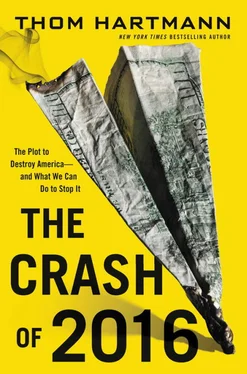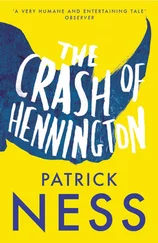After one strike in particular, and subsequent shutdown, in 1978 against the Checker Cab company, the drivers decided to give starting their own cooperative cab company a shot. “It was a lot of hard work, and the first winter was really bleak,” McNamara told me. But around the same time, the bus drivers union went on strike, and the fledgling co-op lent out a few cabs to the out-of-work bus drivers. “It really helped launch our company,” he said, and business has been good ever since.
McNamara himself ditched going to graduate school in 1988 to join the Union Cab co-op. “I was bartending in a bar where a bunch of cabdrivers would stop by, and I heard about Union Cab. I wanted to see what it was like to work in a worker-owned company,” he told me. “It was a great fit with my worldview. To find a company whose culture and worldview matches my own, especially since I was coming from totally left of center, was really amazing—it was like being home.”
When I visited in 2010, Union Cab had about 220 people working for it. That’s 180 drivers plus mechanics, a call-center staff, an IT department for dispatching, and an administrative staff. The entire operation runs a bit over $6 million a year. It’s the only cab company in the state that gives health insurance to its drivers, who are some of the best paid in the country.
“We have drivers who’ve come to this company literally homeless and have managed to buy homes,” McNamara told me. “One of those homeless people is now driving a BMW… We’re head and shoulders above our competitors in how we treat our workers, and that translates into the service we give our customers.”
I talked with one of the drivers, Fred Schepartz, about how Union Cab is different from the rest. “The industry as a whole is exploitative and corrupt, and it’s getting worse,” Fred said. “The cab industry in Milwaukee is more and more like a sweatshop, with a lot of immigrant drivers, who are more desperate than we are for work.”
Unlike Union Cab, the rest of the cab industry isn’t set up for the drivers to make money; it’s set up for the owners to make money, Fred told me. He gave me an example of one of the other cab companies in town that uses the standard sole-proprietorship model, in which the owner is in the business of making as much money for himself as he can and he does it by exploiting the hard work of his drivers. He takes $1.50 off the top of every ride a driver does. He pays his drivers a commission, but that $1.50 is not commissionable. He presumably makes that choice because it makes his company more money.
But at Union Cab, “You don’t have to work sixty or eighty hours like so many other cabdrivers have to do. You don’t leave work with your soul sucked out so badly that you can’t do anything else afterward,” Fred told me. “I get a fifty-two percent commission, I have health insurance, and my wife is on the policy and that’s literally been a lifesaver, as she’s had major and minor surgery over the past few years. Working in a workplace where every single person has a say and every single person is a vital piece of the whole company is a totally different experience.”
With fewer hours and better pay, most of the drivers at Union Cab can pursue their other interests. While working as a driver, Fred has published several short stories, with his first novel published four years ago entitled Vampire Cabby , about a 1,000-year-old vampire who loses his money in the stock market crash of ’87. At the time I talked to him, he was working on another book, “Solidarity Moon,” about a labor struggle on the first colony in a star system.
“I ended up living it instead of writing about it,” he told me.
“We have a number of musicians who have put together two-CD compilations of their music, we have artists, we have three published authors, so people are able to pursue other things in their lives because we do allow people to make enough in a normal forty-hour workweek that they can also do other things.”
Unlike the big banks on Wall Street and the same transnational corporations that line Main Streets across America, Union Cab isn’t run by the profit motive. As John McNamara told me, “We don’t want a huge profit at the end of the year, because that means you didn’t pay your workers enough.”
But can a company not exclusively motivated by profit be able to compete and do well in the market? Absolutely. Union Cab is the largest of the four cab companies in Madison; it has the largest fleet and the best service. It has an employee retention rate of 85 percent and most workers stay there beyond five years.
In fact, Union isn’t alone. There are nine other successful cooperatives—from bakeries, to engineering companies, to pharmacies—within five miles of the state capital, employing over four hundred people and doing more than $30 million in business a year. 204
In fact, a lot of Americans have endorsed cooperatives in recent decades, thus laying the foundation for an entirely new economy to replace the one that will be in tatters following the Crash of 2016.
We think that giant transnational energy corporations dominate the energy market, but in reality cooperatives do. More than nine hundred rural electric cooperatives deliver electricity to more than 42 million people in forty-seven states.
There are roughly thirty thousand cooperatives in the United States, running 73,000 businesses and owning more than $3 trillion in assets. They bring in $500 billion in revenue and pay $25 billion in wages to 2 million workers in every sector of the economy.
Despite falling behind the rest of the world, Rebecca told me, “It feels like we’re on the edge of a huge explosion in the sector, and we’re working to build the capacity to support that.”
The crash will be the trigger.
CHAPTER 16
Epilogue—A Letter to My Great-Grandchildren
The test of our progress is not whether we add more to the abundance of those who have much; it is whether we provide enough for those who have too little.
—President Franklin D. Roosevelt, 1937 Second Inaugural Address
In 2090, you live in an “interesting” time, much like the one I’m alive in right now and my children are experiencing with some ferocity.
After the Progressive Revolution that followed the Crash of 2016, the conservative/neoliberal laissez-faire economics championed by Reagan, Greenspan, and Milton and Tom Friedman was so discredited that, like the last time it was discredited in 1929, it pretty much went underground. Ayn Rand and her bizarre writings were viewed as crackpot and ignored.
The “Democratic Socialism”—which had already been largely adopted by Japan, South Korea, Australia/New Zealand, and many South and Central American countries by 2016—was finally accepted by Americans as the only viable way to have both a vibrant—and, perhaps most important, stable—economy and at the same time have an uncorrupted democratic form of governance.
Semiprotectionist trade and manufacturing policies were adopted, energy independence was achieved during the first few decades after the crash, and taxes were raised on the Economic Royalists—and their behaviors in the political arena were restricted by constitutional amendment—so for another few generations (much like in the era of 1935–80) their ability to control governance was limited and their ability to crash the economy again was stopped.
That lasted from roughly 2016 through about 2066—much like the fifty-year period after the crash of 1929.
But then your generation’s Lewis Powell, Jude Wanniski, Milton Friedman, and—ultimately—Ronald Reagan emerged. Your generation’s very wealthy—your equivalent of our Koch brothers and Walton heirs—found people to draft policy papers, invent institutions, write novels, and busy themselves in the political arena.
Читать дальше












